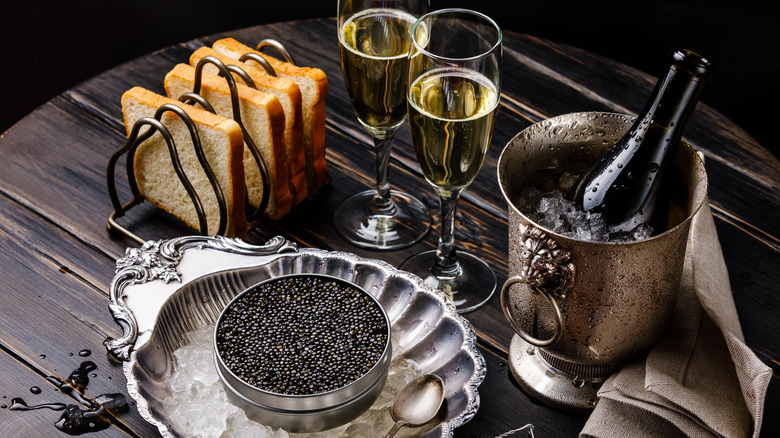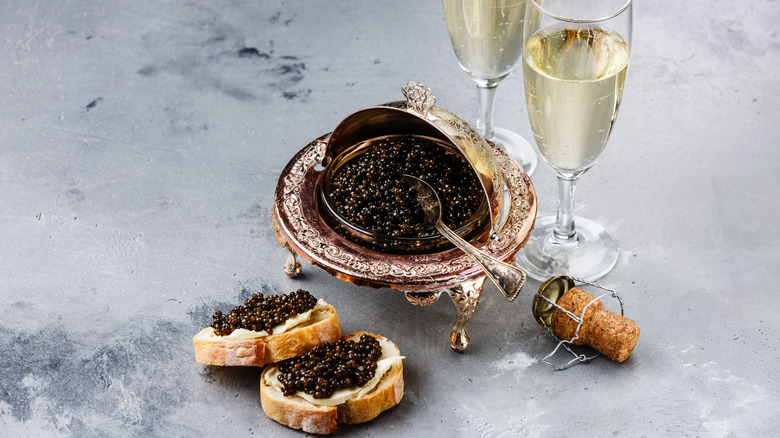How Champagne And Caviar Became A Symbol Of Decadence
The marriage of caviar and champagne isn't just about luxury. The combination of flavors and textures is a match made in gastronomic heaven, as the rich, oily mouthfeel of caviar is kept in check by bright, bubbly sips of champagne. The duo makes for a fresh, effervescent serving that has come to define luxurious merriment and celebration.
Prehistoric humans ate fish eggs, and carp roe was salted and eaten long before Mongol rulers dined on salted roe of sturgeon. Even Aristotle wrote about caviar and roe in the 4th century B.C., noting that sturgeon eggs found their way onto banquet tables at raucous events. Persian nomads, too, feasted upon sturgeon roe harvested from the Caspian Sea, and Persian and Russian nobility not only savored the buttery notes of caviar but offered the delicacy to special visitors and envoys. Sturgeon roe eggs became called khavyar, a Turkish term meaning strength and power.
Appropriately, the association of caviar with the upper class wasn't always accurate, according to food writer and caviar expert Inga Saffron. While writing her book "Caviar: The Strange History and Uncertain Future of the World's Most Coveted Delicacy," Saffron discovered that caviar was once food for those who couldn't afford sturgeon meat and was a staple part of the Russian diet. When Russians fled to France after the Bolshevik Revolution, their taste for caviar came with them, and those with means discovered that serving caviar with fine champagne made for a delicious pairing.
The universal love for opulence
Black gold, a term now commonly used to reference the pricey black orbs, and celebratory glasses of fine champagne came to mark more opulent experiences. The combination wasn't kept among aristocratic circles for long, however, and was soon embraced by others wanting to celebrate. By the time the 19th century rolled around, caviar became associated with luxury.
"At the turn of the century, sturgeon were so prevalent in the U.S. that caviar was served in saloons for free essentially playing the role of modern-day bar nuts," filmmaker Brian Gersten told Forbes. Only in the Gilded Age did caviar become expensive due to the investment necessary to harvest it, since it can take years for eggs to be collected from the fish. Americans became the front-runners in exporting caviar around the world until overfishing collapsed the industry, pushing caviar prices even higher and cementing the food as a decadent item. As prices rose, so did the idea that this was an exclusive, expensive ingredient.
In 2008, Laboratoire ESE researchers offered participants caviar from two tins, one marked rare and the other common. Though the contents were the same, the rare caviar was ranked more favorably in the study. To this day, a fizzy glass of champagne and dishes of caviar remain symbols of abundance worldwide.

